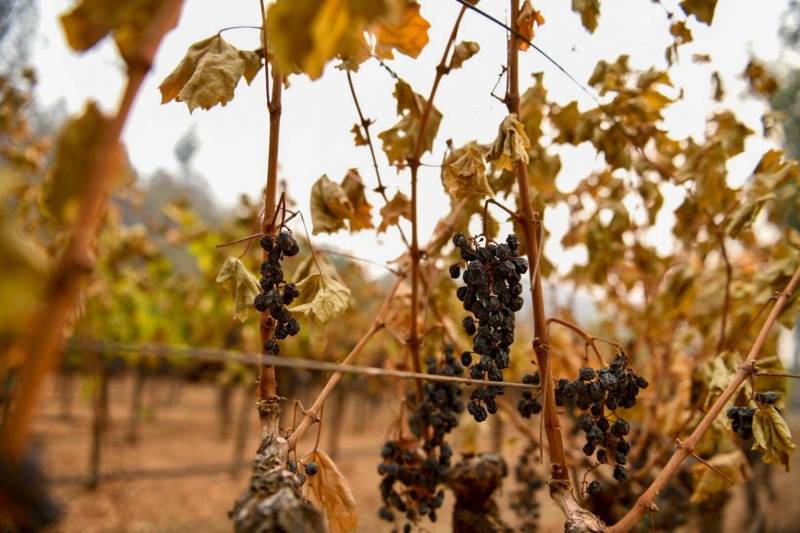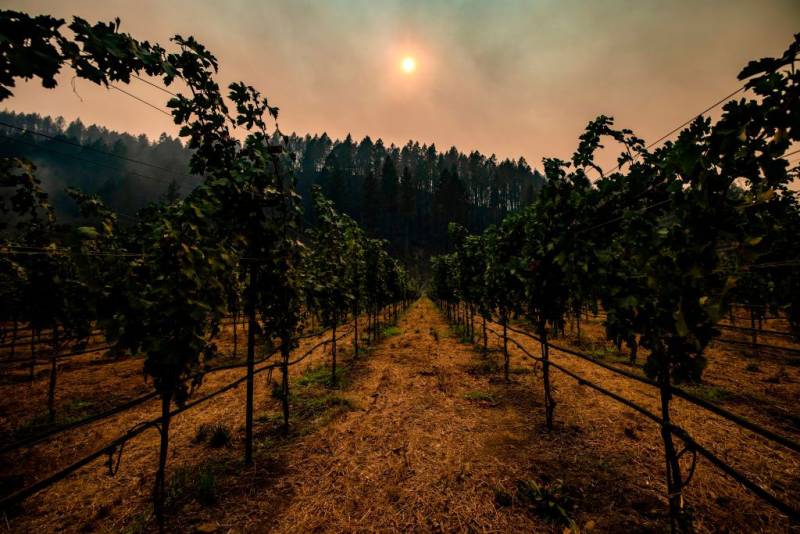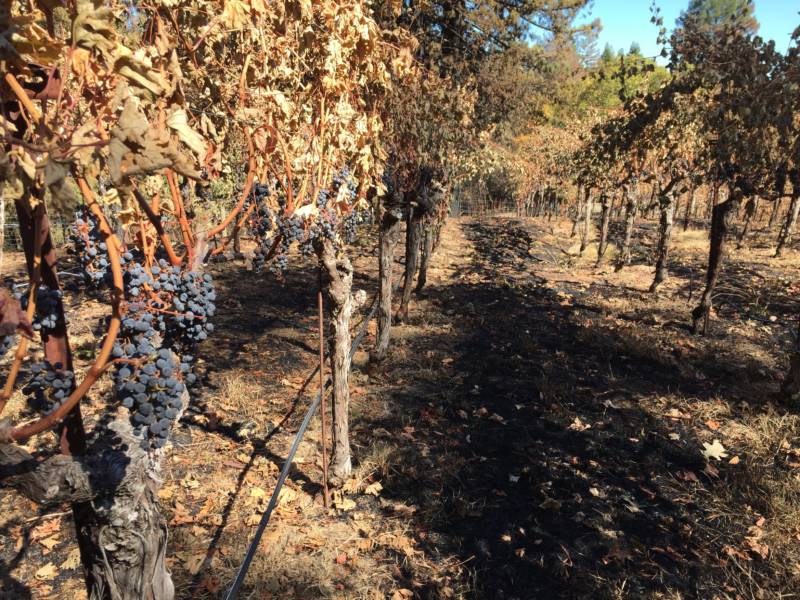In September of 2015, Cecilia Enriquez sold the Petaluma estate of her family's winery, Enriquez Estate Winery, in order to purchase a new property in the Russian River Valley. The following year, they were "rocking and rolling" in their new vineyard, but by the beginning of 2017, record-breaking rains had hit the Bay Area and caused destructive flooding.
Thankfully, the winery was elevated enough to not be affected. Then October brought historic fires that damaged at least 27 wineries across Sonoma and Napa counties. With her winery located right off of River Road, Enriquez says, the fire came close, crossing Highway 101 just south of the River Road exit, toward Coffey Park.
Since 2017, fires are becoming more frequent—and destructive. In 2020, when the August Complex Fire became the largest fire in California history, Enriquez had to manage evacuations and power outages.
"You get so used to them that you already have things ready to go," Enriquez says. "It becomes part of your normal everyday life."
Like Enriquez, the California wine industry at large has struggled with the effects of climate change: drought, earlier and earlier harvests, floods and fires. But beyond structural damage, possibly the biggest impact that vintners and wineries have had to deal with is smoke taint.

Reversing the Effects of Smoke
Smoke taint occurs when grapes are exposed to wildfire smoke, which can result in an overwhelming quality to the wine, often described as "campfire," "burnt" or "medicinal." With the extent of the fires in 2020, many wineries had to decide what to do with fruit that was tainted. And, since 2017, wineries like Gundlach Bundschu in Sonoma County have experimented with technologies that both test for the presence of smoke taint and work to reverse it.
"There are efforts to mitigate climate change and there's just kind of adaptation," says Towle Merritt, the vice president of operations and general manager at Gundlach Bundschu, who has plenty firsthand experience with smoke taint. In 2017, multiple Gundlach Bundschu properties had fire on-site. Going into this year, the winery wasn't looking to take in any grapes after October.

